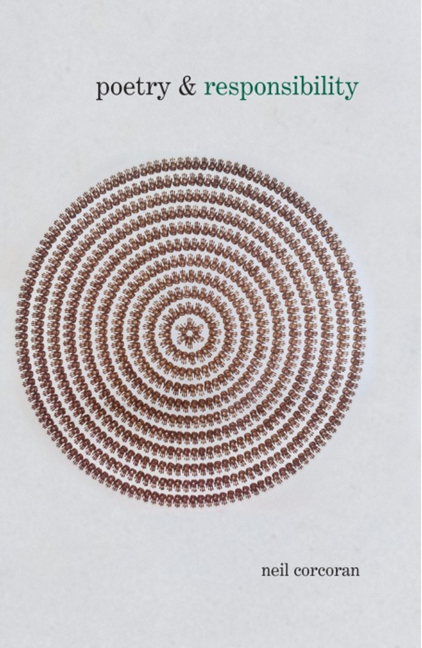Book contents
- Frontmatter
- Dedication
- Contents
- Acknowledgements
- Introduction: The Responsibilities of Poetry
- PART I
- PART II
- 4 W. B. Yeats's ‘Among School Children’: The Poem and its Critics
- 5 Question Me Again: Reflections on W. B. Yeats and Seamus Heaney
- 6 The Same Again? Louis MacNeice's Repetitions
- 7 The Celebration of Waiting: Moments in the History of Modern Irish Poetry and the Visual Arts
- 8 The Pools of Shiloh: On Paul Muldoon's ‘Our Lady of Ardboe’
- PART III
- Notes
- Index
5 - Question Me Again: Reflections on W. B. Yeats and Seamus Heaney
from PART II
- Frontmatter
- Dedication
- Contents
- Acknowledgements
- Introduction: The Responsibilities of Poetry
- PART I
- PART II
- 4 W. B. Yeats's ‘Among School Children’: The Poem and its Critics
- 5 Question Me Again: Reflections on W. B. Yeats and Seamus Heaney
- 6 The Same Again? Louis MacNeice's Repetitions
- 7 The Celebration of Waiting: Moments in the History of Modern Irish Poetry and the Visual Arts
- 8 The Pools of Shiloh: On Paul Muldoon's ‘Our Lady of Ardboe’
- PART III
- Notes
- Index
Summary
In 1967 Richard Ellmann, who had already written extensively on Yeats, published a book called Eminent Domain, which, its subtitle tells us, is a study of Yeats ‘among’ a number of other writers, including Joyce, Eliot and Pound. It is a book about literary inter-relationship and influence, what most of us now would call ‘intertextuality’. The metaphor of Ellmann's title, drawn from the sovereignty of property rights, suggests the view of literary community that the book advances; and its opening paragraph tells us that ‘influence’ is a term that ‘conceals and mitigates the guilty acquisitiveness of talent’:
That writers flow into each other like waves, gently rather than tidally, is one of those decorous myths we impose upon a high-handed, even brutal procedure. The behaviour, while not invariably marked by bad temper, is less polite. Writers move upon other writers not as genial successors but as violent expropriators, knocking down established boundaries to seize by the force of youth, or of age, what they require. They do not borrow, they override.
This may itself derive from T. S. Eliot's well-known contention in his essay on Philip Massenger that ‘Immature poets imitate; mature poets steal’, even as it adds to it an apparent readiness to be impressed by the manners of the jungle. So Ellmann's observation may be thought to practise what it preaches, by performing its own act of over-riding.
Eminent Domain is cited in the preface to the book Harold Bloom published on Yeats in 1970, and Ellmann is one of its dedicatees. Bloom's book is taken up largely with the poet not among his peers and successors but among his Romantic forerunners, notably Blake and Shelley. It was while writing this book that Bloom began to construct his theory of what he called, now famously, ‘the anxiety of influence’. Even though Bloom's stated preoccupation is not with psyche but with pneuma – with the spirit of poetry that bloweth where it listeth – this is essentially Ellmann's conception of writerly inter-relationship as a kind of ferocious rapacity, but now immensely and arcanely complicated.
- Type
- Chapter
- Information
- Poetry & Responsibility , pp. 75 - 91Publisher: Liverpool University PressPrint publication year: 2014



